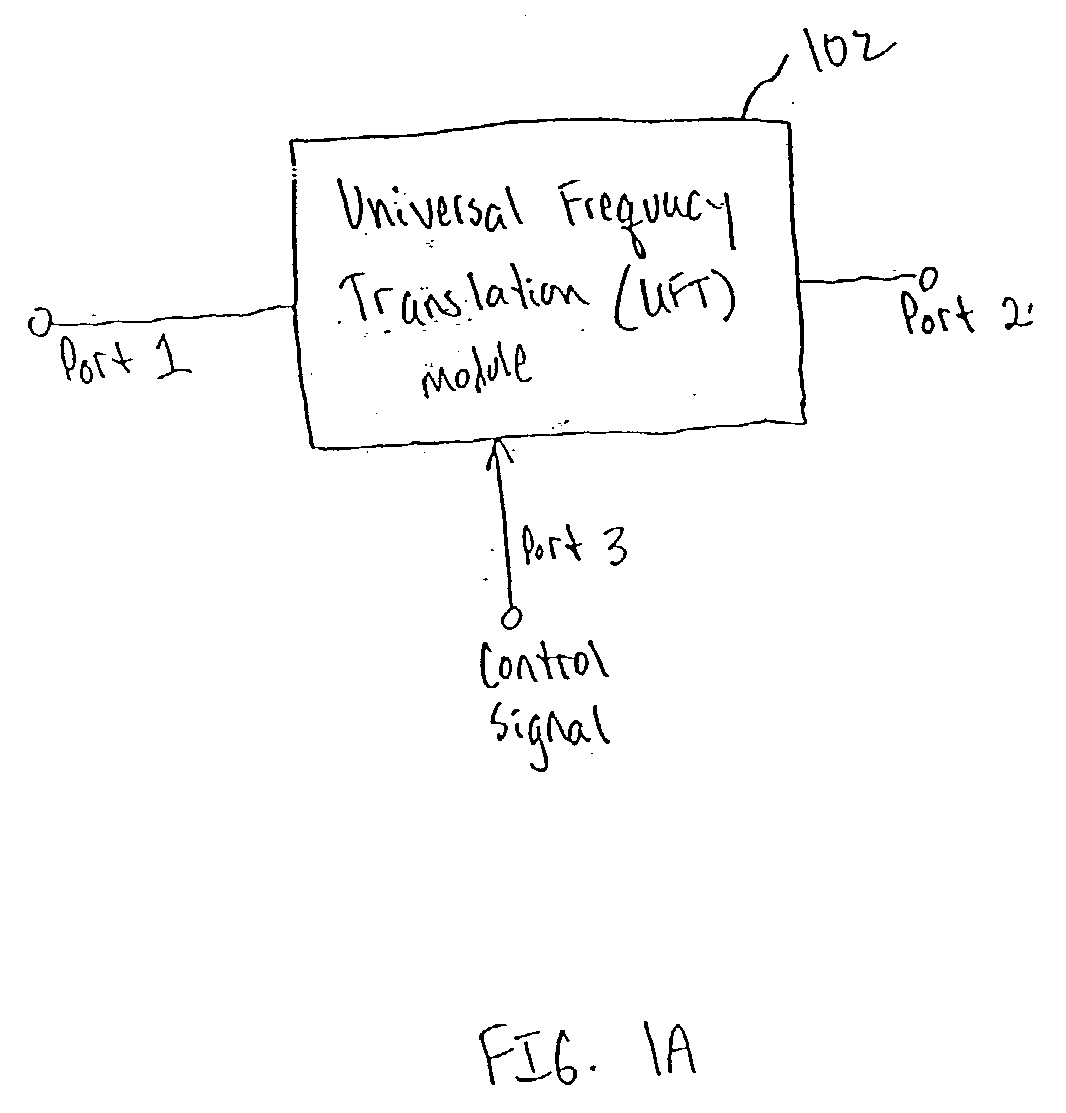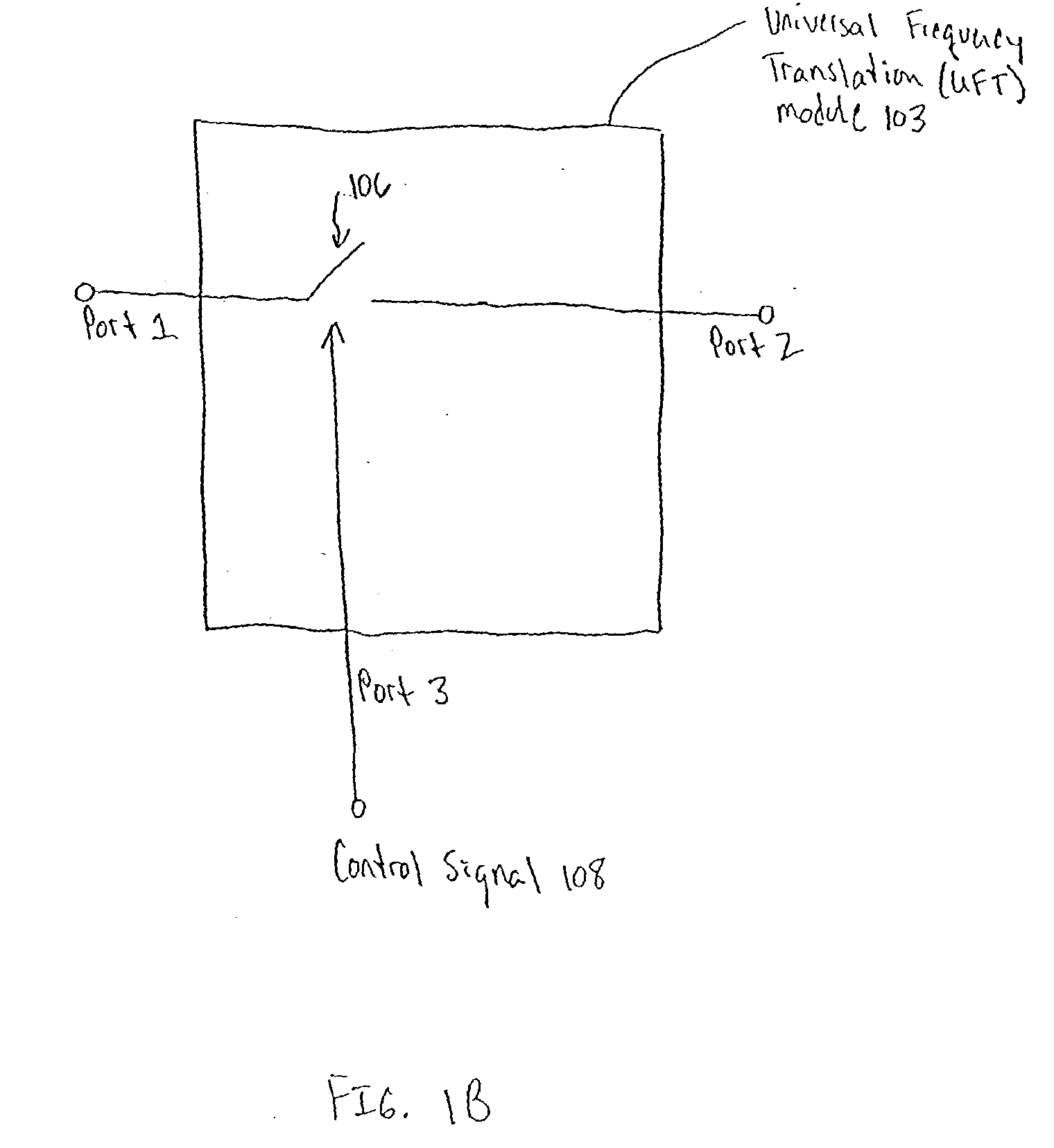Method and apparatus for reducing re-radiation using techniques of universal frequency translation technology
a universal frequency translation and re-radiation technology, applied in the direction of amplitude to angle modulation conversion, digital transmission, pulse technique, etc., can solve the problems of limited operation speed of conventional signal processing technology, inability to easily demodulate a baseband signal from a higher frequency modulated carrier signal directly, and inability to work well outside the frequency range of their designed frequency rang
- Summary
- Abstract
- Description
- Claims
- Application Information
AI Technical Summary
Benefits of technology
Problems solved by technology
Method used
Image
Examples
Embodiment Construction
7.0 DC Offset, Re-radiation, and Dynamic Range Considerations and Corrections 7.1 Overview of DC Offset and Re-radiation 7.1.1 Introduction 7.1.2 A Basic DC Offset Model 7.1.3 Clock Modulation via PN Code 7.1.3.1 Interpretation of R.sub.xx(T) and Required Leakage 7.1.3.2 Charge Injected DC Offset 7.1.3.3 Clock Waveform Impact on CI Induced Offsets 7.1.3.4 Bench Example 7.1.3.5 Complementary Architecture 7.1.3.6 Spreading Code Results 7.1.4 UFD Module DC Offsets from Non-Linearities 7.2 Example Embodiments to Address DC Offset and Re- radiation Problems 7.2.1 DC Offset 7.2.1.1 Reducing DC Offset by Spectral Spreading and De-spreading 7.2.1.1.1 Conventional Wireless Communications Receiver 7.2.1.1.2 Spread / De-spread Receiver Embodiment of the Present Invention 7.2.1.3 Charge Injection Reduction Embodiment 7.2.1.4 Auto-Zero Compensation 7.2.1.5 Reducing DC Offset with Differential Configurations 7.2.1.6 Reducing DC Offset with Differential Outputs 7.2.2 Re-radiation 7.2.2.1 Reducing Re...
PUM
 Login to View More
Login to View More Abstract
Description
Claims
Application Information
 Login to View More
Login to View More - R&D
- Intellectual Property
- Life Sciences
- Materials
- Tech Scout
- Unparalleled Data Quality
- Higher Quality Content
- 60% Fewer Hallucinations
Browse by: Latest US Patents, China's latest patents, Technical Efficacy Thesaurus, Application Domain, Technology Topic, Popular Technical Reports.
© 2025 PatSnap. All rights reserved.Legal|Privacy policy|Modern Slavery Act Transparency Statement|Sitemap|About US| Contact US: help@patsnap.com



